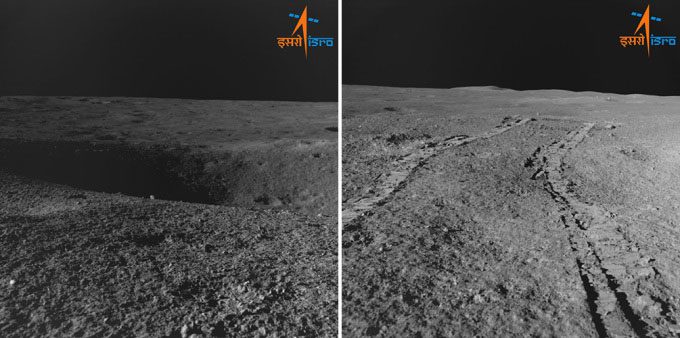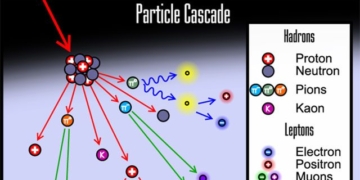The Pragyan autonomous robot operates semi-autonomously on the Moon, capable of receiving commands from the ground control station to alter its path when encountering obstacles.
The Pragyan robot successfully traversed a small crater 10 cm deep. (Video: ISRO/Times of India)
The Vikram lander and the Pragyan rover of the Chandrayaan-3 mission successfully landed near the Moon’s south pole on August 23 and began operations shortly thereafter. On August 27, the Pragyan rover encountered a 4-meter-wide crater located 3 meters ahead, necessitating a change in its route.
“The robot was commanded to reverse. It is now traveling on a new safe route,” stated the Indian Space Research Organisation (ISRO). This was the second crater encountered by Pragyan. Earlier, it had navigated a smaller crater approximately 10 cm deep, as ISRO reported on August 28.
“The first crater the robot crossed was small. This time, it was a much larger crater, so the decision was made to avoid it and select a different safe path,” said a senior scientist.

The crater encountered by Pragyan on August 27 (left) and the retreat path of the robot on the Moon. (Photo: Twitter/ISRO)
Pragyan’s operations on the Moon are semi-automated, requiring ground stations to send commands for the robot to move. The movement of Pragyan faces numerous challenges, each of which must be addressed, according to P. Veeramuthuvel, an expert at ISRO. “Moving the robot from point A to B involves many steps. For each route, data from the robot’s navigation camera is transmitted to the ground to create a Digital Elevation Model (DEM). Experts then decide on the path and send commands for the robot to proceed,” he explained.
Similar to human eyes, which can only see a certain distance, the robot also has limitations, according to Veeramuthuvel. “The maximum DEM created each time the navigation camera sends images is only 5 meters, meaning whenever the robot receives a movement command, it can move a maximum of 5 meters. Even at this range, there are still issues with obstacles,” Veeramuthuvel stated.
The robot has conducted several movement operations as of August 27. “Pragyan is not a large autonomous robot. With limited resources, we have deployed compact, modern systems. However, there are limitations such as not being able to conduct measurements and communicate remotely 24/7; it must continuously track the Sun. Therefore, the turnaround time between each movement operation is about 5 hours,” Veeramuthuvel added.
“The Sun does not stay in one place. Each day, it rotates 12 degrees, and this must be taken into account because, unlike the lander with solar panels covering three sides, the robot is equipped with solar panels that can unfold and fold. One side is covered with solar cells, while the other side covers only half,” he explained. The robot carries remote sensing devices, telecommunication equipment, data processing storage, and other instruments, making energy extremely important.
“Data speed is also limited because the robot can only communicate with the lander, from which we must download data to the ground. This is also time-consuming as we need to review data from scientific instruments. Therefore, each movement of the robot is meticulously planned, and we believe that the work up there is proceeding well,” shared Veeramuthuvel.
The Pragyan rover weighs 26 kg. It carries laser devices and an alpha particle beam to study the composition of the Moon’s south pole. It will also use scientific instruments named RAMBHA and ILSA to study the atmosphere while drilling samples for further analysis of the surface composition of the Moon. The robot’s lasers will attempt to melt a sample to analyze the gases released, helping to understand the chemical composition of the Moon’s south pole, according to Times of India.




















































